JM led a small team learning special tips on how to tie this damsel nymph. One thing I learnt reading the FlyLife article was that while damsels and dragonflies look similar as adults, their nymph stages are quite different.
keyword wetfly nymphyfly

JM led a small team learning special tips on how to tie this damsel nymph. One thing I learnt reading the FlyLife article was that while damsels and dragonflies look similar as adults, their nymph stages are quite different.
keyword wetfly nymphyfly
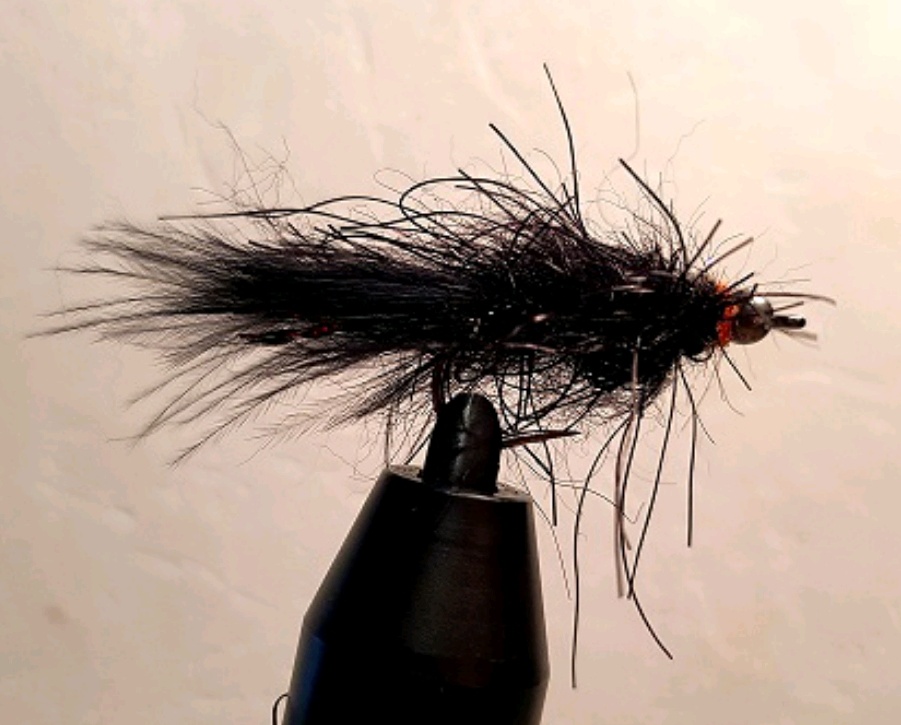 Flytying will be run by Shaun with his Crustacean Bugger – now known to be effective both locally and in Italy! Normal time of 7:30PM at Raiders Weston Club.
Flytying will be run by Shaun with his Crustacean Bugger – now known to be effective both locally and in Italy! Normal time of 7:30PM at Raiders Weston Club.
According to Lyall it looks like a trout slayer to and would be perfect for taking on the fat trout a few of us have been catching at Lake Eucumbene over the yabby beds recently. The materials list is below and Shaun’s full tying instructions will be available in hard copy at fly tying on Wednesday so BE THERE!!!
Shaun’s Crustacean Bugger
keyword wetfly streamerfly

We tied the Eucumbene Zonker Bugger under JQ’s supervision.
Materials list and a photo of the killer fly here. Warning – these flies are so deadly that NSW Department of Primary Industries is about to make them illegal. 😀
The zonker is the tail, a replacement for the usual marabou. They’re not overly big and tied on a jig hook so that it may be snag free as you pull them through yabbie beds or soaks around the lakes.
Recipe:
– jig hook sizes 10-16. 12-14 is a recommended size for these. With a slotted bead to suit.
– Thread 8/0 uni and a colour of your choice
– Zonker strip (olive, brown, Black etc) to create the tail. We will remove the fur from strip, rather than tie in the strip.
– flash in any colour. One or two strips tied into the tail.
– body may be any dubbing, spectra, seals or chenille etc
– small wire any colour (locking down the hackle).
– hen hackle to suit body. Eg grizzly, olive, brown black etc.
– hot spot usually flyline backing or something that ‘pings’ when the UV torch hits it. JQ will bring this. It’s what Nathan recommends!
– head cement be it Loon UV or Sally Hansen’s
A simple straight forward tie… the thorax is the scruffy piece and the collar gives it a ‘lock on’ feature for the fish.
•Hooks – types various(jig, straight, caddis etc) sizes 12-18
•Bead – suit hook size – colour various
•Thread – colours various – 8/0 or 6/0 uni thread
•Wire – colours various – small (.6mm)
•Body – Various – stripped peacock quills, Hends body quills or tinsel mylar etc
•Thorax – colours and dub various. Hends Ice, Hends hares ear, seal-prism blend etc
•Collar – colour various but recommend a uv reflect (fluro orange, hot pink/ yellow, lime etc) size 3/0
•Sally Hansen clear top coat or a uv resin to lock down and bring shine to the collar.
Nothing special in this tie. Every fly we’ve covered in the past has a piece of material suitable to build this fly, nothing more to buy or hunt at a shop.
keyword wetfly nymphyfly
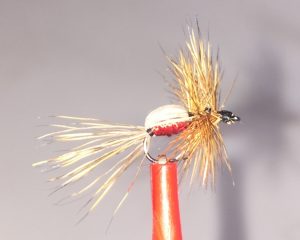
Claude has stepped up to instruct on his variants of the Royal Humpy style fly.
Claude has recently tied and tried a couple of versions of the Royal Humpy dry fly on one of Canberra’s local rivers. It proved successful for him and one of his fishing mates…who was considerably more skilled and consequently successful. A number of the fish were caught during blind casts rather than to rises. His mate has caught fish using it on a couple of occasions so hopefully the fish catchability of the fly was not a fluke!
The interweb tells us: “the Humpy trout fly comes in a range of patterns and colours: green, peacock, red and yellow. It represents a beetle or large flying insect and is a good all-purpose fly to prospect waters with. It is a useful indicator fly in the larger sizes. They are great summer time dry flies and produce fish consistently.”
Another site advised: “if you fish mountain streams that are bordered by forest, the trout will be used to seeing a multitude of terrestrial insects that continually rain from the trees. Ants, beetles and bees are often the staple trout foods in this situation. The Humpy is a great searching pattern.”
The traditional humpy, deer/elk hair and red thread takes Claude about 20-30 minutes to tie (he’s still a bit slow) so it may be a bit long to tie on one of our nights. The foam back, red dubbing body and aero wing (below) takes about 5-10 minutes less. The royal humpy can be tied in a variety of body colours using dubbing or thread.
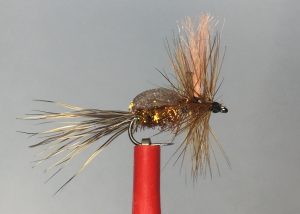
Recipe:
keyword dryfly
An evening that you can’t afford to miss… Evan of Createafly fly tying has agreed to host fly tying next week on Wednesday evening from 7:30 at Raiders Weston at 1 Liardet Street in Weston.
The theme will be “all those fly tying questions you were too embarrassed to ask” so it will be a question and answer and demonstration session. Please send your questions through to Evan so that he can prepare his answers and demonstrations.
My question is “Who was Mrs Simpson anyway and why is she known as a killer???”
Bring your usual fly tying equipment.
See you all there for an out-of-the-ordinary night!!!
Nathan led the team tying the bibio. He remarked that he did quite well with it at Tantangara Dam for the recent FFA event.
Black and red seals fur, silver wire and hen hackle. More details via email.
keyword wetfly
hosted by Claude
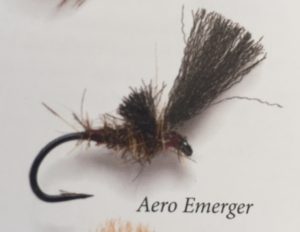
| Item | Notes |
| Hook | Tiemco 900 BL #16 – 18
Or 102Y #19 |
| Thread | 8/0 Uni thread – wine |
| Body | Hare’s Ear |
| Emergent Wing | Tiemco Aero Dry yarn (black or grey) |
In Australia’s Best Trout Flies Revisited Pat Kennedy writes that David’s Aero Emerger has become his go-to fly whenever a hatch begins on the Mataura or its tributaries. He notes that it rarely lets him down. Suprisingly the black wing usually has excellent visibility, and seems to present a credible profile of an emerger dun. When tying the wing, leave a small shoulder to suggest the wing-case of an emerging mayfly. Dub the body very sparsely so that it sinks when wet. Prior to fishing, apply a small amount of floatant to the wing and shoulder only.
keyword dryfly emergerfly
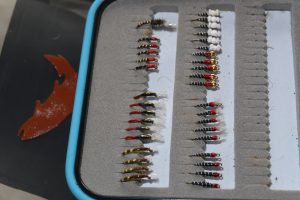
This month Nathan will be showing us how to tie chironomids also known as buzzers or midge larvae. They come in a huge array of colours and can be tied to float head up, tied bead head as a point fly, tied with or without gills or oxygen bubbles.
The materials you will need are:
– hook – pupa or caddis curved hooks #14, 16 or 18 or as small as you dare
– thread – black, olive or red
– silver ultra wire
– peacock hurl
– white poly yarn or similar
For those interested in entomology, take a look at http://www.mdfrc.org.au/bugguide/display.asp?type=5&class=17&subclass=&Order=7&family=252&couplet=0 which will tell you why red buzzers are red (red pigment haemoglobin to help them absorb oxygen), where they live and life cycle.
keyword wetfly